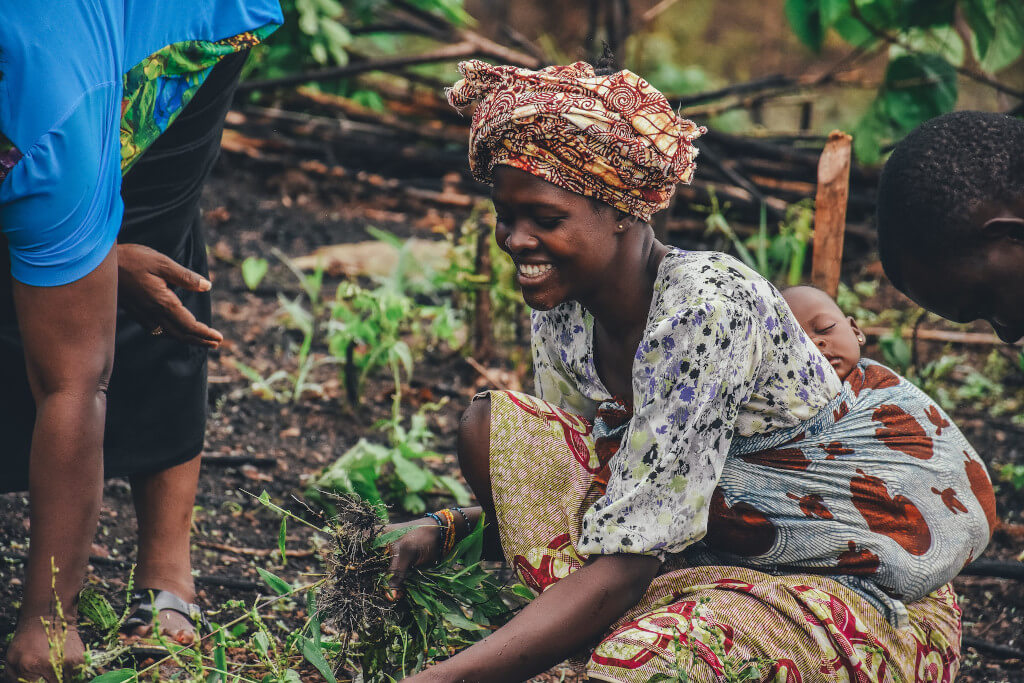Most of South Africa’s Elderly Female Population Lives in Poverty
Cyril Ramaphosa, the President of South Africa, stated not long ago that “South Africa requires a fresh coalition to combat poverty, unemployment, and inequality.”
The giving of state funds by the government as an attempt to combat the issue of poverty has not been successful, since poverty rates continue to climb. In the year 2020, it was stated that fifty percent of the country was struggling with difficulties that had led to the descent of people and families into poverty.
Prior to the COVID-19 epidemic, the economy of South Africa had been expanding at a relatively slow rate, with high unemployment rates and rising food prices. The current state of poverty in South Africa has been further exacerbated by the pandemic, and it is anticipated that the pandemic will cause an additional one million individuals to experience hardship.
Despite having access to state pensions, some of the people who have been affected the hardest are retirees who are surviving off of less than 16% of their salaries before they retired. The amount of retirees who are at risk of living in poverty is increasing, which means that they now have a chance of experiencing poverty that is three times greater compared to any other age bracket.
Among Those Already Retired, Women Are the Ones Who Are Hit the Most
Due to the economic inequalities that women face throughout their working lives, they will enter retirement even further behind their male counterparts. As an illustration, women constitute the largest proportion of low-paid employees; in addition, they confront unequal chances in the labor market and are responsible for the care of their families.
The issue of poverty is multifaceted and convoluted. However, previous research suggests that looking at the situations and living conditions of women is the best way to understand women’s perceptions of marginalization, social exclusion, and the realities of resource deprivation. We gain a greater grasp of how women navigate, negotiate, and govern their lives when we comprehend how they view the conditions in which they find themselves.
The research concentrated entirely on retired women’s perspectives on poverty because we wanted to investigate the topic from a gendered point of view. We investigated whether or not retiring South African women felt that they belonged to a lower socioeconomic class. The response to the following question determined how people viewed those living in poverty:
If both you and your family were to describe yourselves as…
The levels of comfort are as follows:
- (1) rich
- (2) comfortable
- (3) relatively comfortable
- (4) simply scraping by
- (5) poor
- (6) extremely poor.
In most contexts, the term “poverty” refers to a level of material deprivation that is amenable to quantitative analysis. However, people’s views of poverty are equally as significant since they contribute to the process of determining what people’s needs are; this is because people’s perceptions are impacted by their requirements.
An Accumulating Responsibility
We investigated poverty attitudes by looking at four different types of potential variables. These were the following:
- Aspects of a person’s demographic profile, such as ethnicity
- Educational status
- Marital status
- Socioeconomic status
- Factors about the economy, including individual and family income levels, as well as the number of people receiving state pensions.
- Household sufficiency standards and measurements – These included the sufficiency of a household’s food supply, educational opportunities, living conditions, and medical treatment.
In addition to that, it incorporated impressions of contentment with regard to monetary stability and quality of life. We utilized a poll that is nationally representative and collects responses from South Africans about their societal views. For this study, it was restricted to senior citizens who were female from South Africa. This led to a total of 325 people responding to the survey.
The majority of those who responded stated that they were African widows above the age of 60 and that they had never been married. They also admitted that the highest education level that they had received was from elementary school.
The majority of these participants (76%) indicated that their primary source of income was from their retirement, with 86% stating that they were dependent on government retirement benefits.
More Than Sixty Percent of the Ladies Thought of Themselves as Being Economically Disadvantaged
According to the result of the research, single and divorced women were in an inferior position to married women when it came to analyzing the elements that determine the experience of living in poverty. Furthermore, African women reported having a greater awareness of what it is like to be poor compared to women of other ethnicities. In addition, pensioners who relied solely on subsidies from the government for their income after retirement were much more likely to have a negative impression of their financial situation compared to retirees who had multiple sources of income.
Over eighty percent of women surveyed indicated that their households lacked adequate access to medical care, shelter, educational opportunities, and food supplies.
One more significant discovery was that income did not fully explain people’s opinions of their financial situation. Rather, retired women responded that their level of self-perceived financial stability and contentment with their style of living was the most important factor in determining whether or not they regard themselves to be impoverished.
The significance of education is probably the finding that is most captivating to individuals. A person’s level of education is often cited as a factor in whether or not they are able to climb out of poverty. However, the findings of this research indicate that education doesn’t eliminate the possibility of gender poverty. This is due to the fact that education does not remedy the inequities that a woman encounters during her life span. Despite the availability of educational opportunities, the notion of poverty is created as a consequence of the compounding effects of gender disparity, socioeconomic disparity, and advancing age.
What Absolutely Must Take Place
Historically, the lack of financial resources has been seen as the primary defining characteristic of poverty. However, due to the fact that it is multifaceted, we need to look at it through a more expansive lens. This is because people who live in poverty may be subjected to several disadvantages at the same time. Therefore, gaining a better grasp of how seniors perceive their level of financial stability and how satisfied they are with their current way of living provides deeper insights into gendered conceptions of poverty.
Considering the difficulties that retirees face financially is something that needs to be done. But expanding people’s access to resources on the individual and household levels is a crucial component of any anti-poverty approach. This is especially true for households in which the woman is the primary breadwinner.
Education is still one of the most significant tools for reducing the likelihood of older people living in poverty and mitigating the effects of retirement income instability. Education accessibility on the level of the household, in particular, is of utmost importance in lowering the danger of living in poverty after retirement. This is due to the fact that it is easier for an individual to pull themselves out of poverty on their own than it is for an entire household to be lifted out of poverty by a single individual.
There is still a significant amount of sexism present in many corporate regulations and practices. As a direct consequence of this, many women face significant barriers while trying to enter the workforce. This, in the long run, results in insufficient savings and an uncertain income during retirement.
It is vital that women have a bigger say in the decision-making process at the policy-making level to bring about the necessary societal change to eradicate gendered poverty. The slow growth of gender-neutral policies is a direct result of the marginalization of women in decision-making positions.

